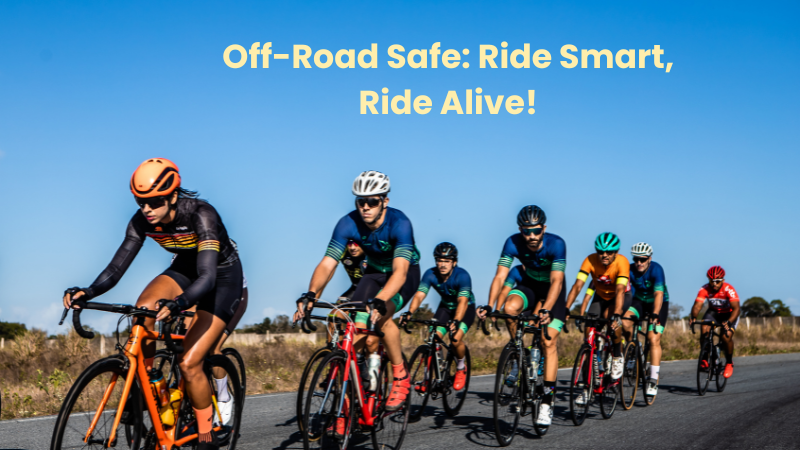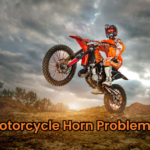Off-road riding is exciting. It gives adventure seekers the thrill of tackling rough terrains. However, it also comes with risks that require careful preparation and knowledge. Whether you’re riding an ATV, dirt bike, or off-road truck, safety should be your top priority. Using the right techniques, proper equipment, and good riding etiquette can help you avoid accidents. This also makes your experience better. This guide explores key off-road riding safety tips. It provides insights to help you have a safe and fun adventure.

Choosing the Right Off-Road Vehicle
Selecting the right vehicle for off-road riding is crucial for both safety and performance. ATVs, dirt bikes, UTVs, and off-road trucks each have unique features that fit different terrains. Understanding the capabilities of your vehicle helps in managing rough conditions effectively. Consider factors such as suspension, tire grip, and engine power before making a choice. Also, taking care of your vehicle helps it run well. This cuts down the chances of breakdowns or accidents on the trail.
Essential Safety Gear for Off-Road Riding
Wearing the proper safety gear is a non-negotiable aspect of off-road riding. A certified helmet protects against head injuries, while goggles shield your eyes from dust and debris. Protective clothing, including gloves, boots, and padded jackets, minimizes injuries during falls. Investing in high-quality safety gear enhances protection and comfort. Riders should also consider knee and elbow guards for added security. Ensuring all gear fits well and is in good condition significantly reduces injury risks in case of accidents.
Pre-Ride Vehicle Inspection and Maintenance
Before hitting the trails, conducting a thorough inspection of your vehicle is vital. Check tire pressure and tread depth to ensure they provide adequate grip on rough terrains. Assess brakes, lights, and fluid levels to confirm they function correctly. Loose bolts and chain tension should also be examined, as they can impact control and stability. Regular maintenance helps your vehicle last longer. It also cuts down on unexpected failures that might cause dangerous situations while driving.
Understanding Terrain and Trail Conditions
Off-road trails vary in difficulty, requiring riders to adapt their approach based on the terrain. Sand, mud, gravel, and rocky paths each demand different techniques for safe navigation. Before embarking on a ride, study the trail map and assess potential hazards. Be aware of steep inclines, water crossings, and hidden obstacles. Riding at a controlled speed helps you react better to sudden changes in terrain. This reduces the risk of accidents and injuries.
Proper Riding Techniques and Body Positioning
Mastering proper riding techniques is key to maintaining control and balance. Keeping a steady throttle and avoiding sudden accelerations prevents skidding. On rough terrain, standing slightly on foot pegs improves stability and shock absorption. For uphill climbs, shifting body weight forward aids traction, while leaning back on descents enhances control. Practicing these techniques in a safe place boosts handling skills. This makes off-road riding smoother and more fun.
Riding with a Buddy or Group
Solo off-road riding can be risky, especially in remote locations where help may not be readily available. Riding with a buddy or group ensures that assistance is nearby in case of emergencies. Group rides also provide an opportunity to learn from experienced riders. Establishing communication methods, such as using hand signals or two-way radios, enhances coordination. A designated leader setting the pace prevents reckless riding, ensuring safety for all participants in the group.
Emergency Preparedness and First Aid
Accidents can happen despite taking precautions, making emergency preparedness crucial. Carrying a first aid kit equipped with bandages, antiseptics, and pain relievers is essential. Knowing basic first aid procedures, such as treating cuts, fractures, and heat exhaustion, can be lifesaving. Also, having an emergency plan helps. Know the nearest medical facility and carry a mobile phone or satellite communicator. This way, you can respond quickly to injuries or mechanical failures.
Understanding Off-Roading Laws and Etiquette
Following off-roading laws and etiquette enhances safety and preserves trails for future use. Many trails require permits and have specific rules regarding speed limits and designated paths. Respecting private property and environmental rules stops legal problems. It also protects natural habitats. Also, giving way to hikers and other vehicles, keeping noise down, and leaving no trace help make off-roading enjoyable and responsible for all.
Managing Weather Conditions and Visibility
Weather plays a significant role in off-road safety, as wet or foggy conditions can make trails more challenging. Checking weather forecasts before riding helps in planning appropriately. Riding in heavy rain or snow requires adjusting speed and using appropriate tires for better traction. Visibility is crucial. Wearing bright riding gear and checking that headlights work helps fellow riders notice you. Adapting to changing weather conditions enhances control and reduces the likelihood of accidents.
Fuel and Hydration Management
Running out of fuel in the middle of a trail can be problematic, especially in remote locations. Carrying extra fuel and planning refueling points ensure uninterrupted riding. Additionally, staying hydrated is crucial, as off-road riding can be physically demanding. Drinking water before, during, and after the ride prevents dehydration and fatigue. Packing energy snacks also helps maintain endurance. Fuel and hydration play a key role in making your off-road adventure enjoyable and lasting.
FAQs: Off-Road Riding Safety
1. Why is safety important in off-road riding?
Off-road riding involves rough terrain, unpredictable obstacles, and high speeds, increasing the risk of accidents. Wearing proper safety gear, maintaining your vehicle, and following riding techniques reduce injuries. Being prepared ensures a fun and safe adventure.
2. What type of helmet is best for off-road riding?
A DOT-approved or Snell-certified full-face helmet is the best option. It provides maximum protection against head injuries and shields your face from dust, debris, and branches.
3. How often should I inspect my off-road vehicle?
A pre-ride inspection should be done before every ride. Check tire pressure, brakes, fluid levels, lights, and suspension. Regular maintenance, like oil changes and tightening bolts, helps prevent breakdowns.
Conclusion
Off-road riding is exciting but challenging. It needs good preparation and safety measures. Choosing the right vehicle, wearing the right gear, mastering riding skills, and knowing trail conditions all help make your ride safer. Emergency preparedness, group riding, and respecting off-road laws further enhance safety. By using these key tips, riders can have off-road fun while staying safe on the trails.





